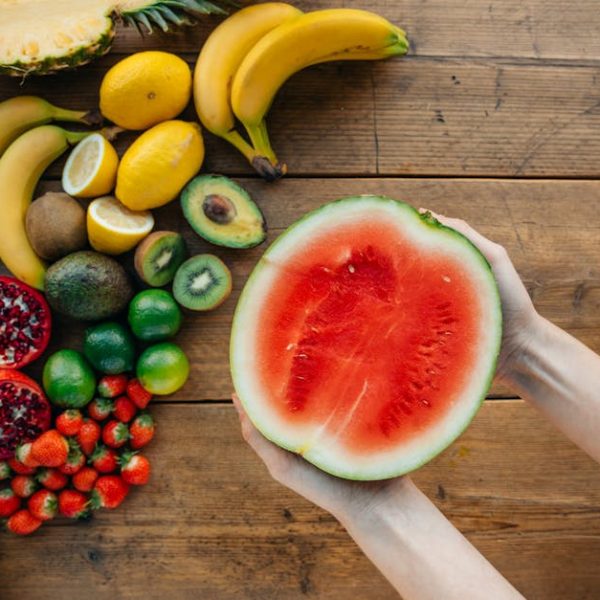Freezing fruit salad isn’t as straightforward as tossing everything in the freezer and hoping for the best. There’s an art to retaining the fresh qualities of fruit that makes a salad so vibrant, tantalizingly juicy, and downright delicious. Understanding this process allows you to enjoy a flavorful medley of fruits beyond their natural season. From choosing the right kind of fruits to learning practical defrosting techniques, this article aims to guide you through this process, offering useful tips and tricks along the way for a successful outcome.
Picking the Right Fruit for Freezing
Certain fruits bear the freezing process better than others—cherries stand stark against bananas, for instance. The ability to retain their taste and textural identity through the harsh cold of a freezer depends on the individual characteristics of the fruit; those high in sugar and water content, like berries and stone fruits, generally make it through unscathed. On the other hand, low-acid fruits like bananas and apples don’t fare as well due to enzymatic browning.
- Strawberries
- Blueberries
- Plums
- Peaches
- Pineapple
- Melon
When selecting fruits for freezing, choose those at their peak freshness and sweetness. Look out for bruises and overripe spots, and seek out fruits with firm flesh and vibrant colors. By making thoughtful selections, you pave the way for successful freezing.
Preparation Techniques for Freezing Fruit Salad
The path to perfectly frozen fruit begins with adequate preparation. Initial steps involve washing thoroughly under cool running water to remove dirt and pesticides. Cutting fruit into bite-size pieces ensures that they freeze evenly and are an accessible size for eating after thawing.
For tough-skinned fruits like mangoes and peaches, peeling before freezing can prove beneficial. For fruits with pits, such as cherries and plums, consider pitting before the freeze. These steps may seem tedious but pay off by enhancing the overall textural experience of the fruit salad post-freezing.
When laying out fruits for freezing, spread them out in a single layer on a cookie sheet. This step allows for quicker freezing and prevents the fruits from forming a massive fruitberg that’s hard to break apart.
Importance of Freezer-Friendly Containers
Once the fruits are satisfactorily frozen, transfer them to a container suitable for long-term freezer storage. Not all containers are equal when it comes to freezer-friendliness: glass containers are breakable, while some plastics may become brittle and crack in extreme cold.
- Glass containers, while sturdy, may shatter if the contents inside expand while freezing.
- Plastic containers are often more flexible, allowing for some expansion of the contents, but can become brittle and break over time.
To avoid possible freezer disasters, opt for plastic containers specially made for freezer storage, or use heavier-duty glass containers that can withstand temperature changes. Don’t forget to leave some room at the top of the container; the fruit will expand as it freezes.
Remember, freezer management doesn’t end when you’ve filled and sealed your containers. Labeling the containers with freezing dates helps to keep track of the fruit’s freshness, making using your frozen fruit salad simpler and more efficient.
Defrosting and Using Frozen Fruit Salad
When it comes to using your frozen fruit salad, proper defrosting is of utmost importance. Depending on how you plan to use your fruit can determine the best method for defrosting. If serving the fruit salad as is, allow it to thaw in the fridge for several hours or overnight. But if you plan on adding the fruit to smoothies, desserts, or sauces, you can dump the frozen chunks directly into your recipe.
Knowing when and how to use your defrosted fruit helps you make the most of your pre-prepped fruit salad. Here are a few options:
- Eating as is for a refreshing snack
- Add to smoothies or yogurt
- Mash and use as topping for pancakes or waffles
- Use for baking in muffins, pies, or cakes
Remember that thawing fruits at room temperature or in warm water can lead to loss of flavor and texture, so always opt for gradual thawing in the refrigerator.
Potential Hurdles in Freezing Fruit Salad and Their Solutions
Despite your best efforts, you might encounter a few challenges when freezing your fruit salad. Common issues include changes in texture, loss of flavor, or freezer burn. These problems often stem from factors like poor preparation techniques, subpar storage methods, or simply keeping the fruit in the freezer for too long.
Here are a few ways to navigate these hurdles:
- Texture Changes: Fruits like melons and bananas can become mushy after freezing. To mitigate this, use them in dishes where texture isn’t a primary concern, like smoothies or sauces.
- Loss of Flavor: This can be a result of the fruits being in the freezer for too long or being exposed to air in the freezer. Ensure your containers are airtight, and you defrost and consume your fruit salad within a reasonable timeframe.
- Freezer Burn: This can occur when fruits are exposed to air in the freezer, leading to dry spots and altered flavor. To prevent freezer burn, remove as much air as possible from containers before sealing or consider vacuum sealing for best results.
By being aware and prepared for these potential issues, you can successfully freeze and enjoy a delicious fruit salad anytime.
Remember, freezing your fruit salad can be a fantastic way to extend the life of your favorite fruits, enjoy them out of season, minimize food waste, and provide a convenient option for healthy eating. Armed with these tips and tricks, you’re ready to start enjoying the perks of having a pre-prepped, deliciously frozen fruit salad at your fingertips. Happy freezing!
Key Takeaway:
- Fruits suitable for freezing include berries, stone fruits, and tropical fruits, chosen for their freshness, firmness, and ripeness.
- Ideal preparation before freezing includes washing, peeling, cutting, and removing pits, with a pointed emphasis on laying fruits flat on trays to prevent clumping.
- The importance of freezer-friendly containers is highlighted with an evaluation of plastic and glass options, sealing methods, and labeling techniques.
- Safely defrosting frozen fruit salad preserves their flavors and texture, with tips provided on incorporating them into dishes or drinks.
- Insight is provided on common hurdles in freezing fruit salad, like changes in texture and flavor or freezer burn, with practical solutions attached to each concern.
Enjoy the pleasure of relishing a vibrant, flavorful fruit medley beyond its normal season. Remember that careful selection, proper preparation, accurate storage, and patient defrosting are your keys to achieving a frozen fruit salad that retains the freshness and charm of its original state. Happy experimenting!
FAQs
Q: Is it okay to freeze pre-cut store-bought fruit salad?
A: It’s generally best to freeze fruit that you’ve prepared yourself so you can ensure its freshness and quality. However, if you still want to freeze store-bought fruit salad, confirm that it’s fresh and shows no signs of spoilage.
Q: Can we add any sweeteners before freezing the fruit salad?
A: Yes, you can. Adding sweeteners like sugar or honey can actually help preserve the fruits’ texture and flavor during freezing. Just make sure you mix it well so all pieces are evenly coated.
Q: Can I mix different types of fruits while freezing?
A: Absolutely, that’s the beauty of a fruit salad! Just ensure all fruits in the mixture are suitable for freezing and are cut into similar sizes for even freezing and defrosting.
Q: How often should I check the temperature of my freezer for storing frozen fruit salad?
A: For optimal storage of your frozen fruit salad, it is recommended to periodically check your freezer’s temperature. It should always be at 0°F (-18°C) or lower.
Q: Can I refreeze fruit salad if it has partially defrosted by mistake?
A: Refreezing partially defrosted fruit can affect quality and safety. If fruit has begun to defrost, it is advisable to consume it as soon as possible.
Do you find these tips helpful? Don’t forget to share this article with others who might be interested and explore more posts on our website.






